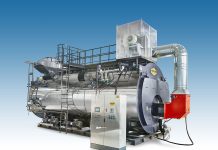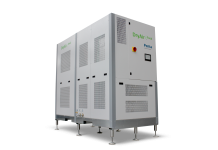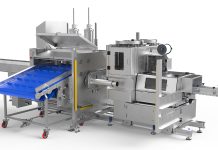Several of the various innovative technologies that are exerting themselves as useful allies of the food industry recently experienced interesting developments.
Carbon dioxide extraction (CO2)
In use for 30 years, this technology is now well established and is often used for the effective extraction of certain substances from food raw materials. The extraction can be used to remove undesirable substances (e.g. decaffeination of tea and coffee), or to extract valuable substances like essential oils, vitamins, and aromas. The advantage of carbon dioxide extraction over traditional extraction systems with solvents being the possibility of avoiding the use of solvents, as they often arise a variety of problems, as: operators safety; high cost for initial purchase and final disposal of solvents; and the risk that solvent residues are left behind in the final product. It comes thus to a generally safer and eco-friendly and sustainable extraction method. High pressure (around 300 bar) is applied to carbon dioxide until the gas turns into liquid: this substance is called supercritical carbon dioxide and has a high extraction power. Carbon dioxide is flown through the raw material, from which it effectively extracts all volatile and soluble compounds. Then, supercritical CO2, loaded with the extracted compounds, is decompressed, and reverts to the gaseous state: the extracted materials are retrieved, and the gaseous CO2, perfectly pure again, is liquefied and recirculated. The extraction with supercritical CO2, appropriately staged, allows also fractioned extraction, i.e. of the different compounds of the same raw materials, as for instance the different aromatic substances that can be obtained from spices. Furthermore, it can be used to “deodorize” raw materials, i.e. to eliminate unpleasant and/or undesirable compounds like oxidation products. It is applied mainly to raw materials like fruits, seeds, algae, leaves, and other vegetables. According to certain scientific studies (1), supercritical CO2 appears to have a bacteriostatic effect on treated products. For particularly difficult extractions, a ultra-high pressure can be applied to CO2, ranging from 500 bar up to even 800-1000 bar: in order to extract also substances with low solubility, as solid fats, wax, or other large molecules (e.g. polyphenols, omega-3 fatty acids, and carotinoids). This technology has been used to extract, for instance, lutein from Calendula, astaxanthin from algae, Carotin from the carrot, and zeaxanthin from corn, with very high recovery rates. In addition to this, thanks to the absence of oxygen, the extracted substances (all of them with a high antioxidant capacity, and therefore very oxygen-sensitive) maintain their properties.

Figura 1. Operation of an extractor of supercritical CO2 (courtesy of A. Wuzik and N. Igl-Schmid, NATECO2)
Self-cleaning dry steam conveyors
Conveyor belts are an integral part of almost all food processors, as they provide for the simple and quick transfer of ingredients, semi-finished and finished products, in any form (liquid or powder) and size. Essential characteristics required for conveyor belts of good quality are: sturdiness and easy cleaning. The latter being particularly difficult due to their structure consisting of hinged parts, where food residues can hide. Bacteria proliferate rapidly from these debris collected in the belt gaps, and the effective sanitation of conveyors at the end of a processing phase are difficult and time-consuming. Recently, an innovative type of conveyor belt is spreading, featuring a dry steam generator. At pre-defined intervals, this automatic generator delivers super-heated dry steam that removes deposits and kills the pathogens present on the conveyor. An additional benefit consists in reducing or even eliminating the need for cleaning the conveyor belts at the end of the working process, operation which is often entrusted to external organisations, with a series of problems which are well-known to the quality managers of food processing companies. These conveyors are suitable for use in facilities where products are processed chilled frozen or at room temperature. They will be officially launched at Foodex in Birmigham from March 24 – 26, 2014. They have already aroused strong interest in the food industry, and certain food companies even contributed to the development of this technology.





